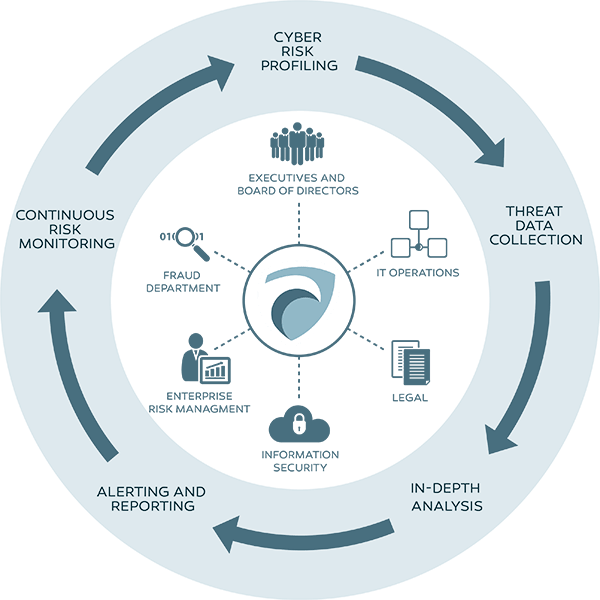
For Outstation Students, we are having online project classes both technical and coding using net-meeting software
For details, Call: 9886692401/9845166723
DHS Informatics providing the latest 2022-2023 IEEE projects on information forensic and IEEE Web Security Projects | 2022-2023 Web Security CSE ISE Projects/web security projects for the final year engineering students. DHS Informatics trains all students in IEEE Web Security Projects | 2022-2023 Web Security CSE ISE Projects and information forensic techniques to develop their project with a good idea of what they need to submit in college to get good marks. DHS Informatics offers placement training in web security at Bangalore and the program name is OJT – On Job Training, job seekers as well as the final year college students can join in this placement training program and job opportunities in their dream IT companies. We are providing IEEE projects for B.E / B.TECH, M.TECH, MCA, BCA, DIPLOMA students for more than two decades.
Python Final year CSE projects in Bangalore
Abstract:
Today various social networking sites are available which make people remain in constant touch with each other. Sharing any type of data has become easy. There are great advantages of such social networking sites excepting a few minor drawbacks like poor security which creates huge problems for people when they were active on such sites. It is assumed that some campaigns were sponsored. With an office full of media professionals, the agency achieved success in promoting false news events and influencing public opinion on politics and was even able to deceive the journalist covering the story for the Times. Cyber Security Forensic is the process of inferring something about the characteristics of a user from the form and content of their writing present in a collection of evidence. The emergence of social media as a primary mode of communication has challenged the traditional assumption that a forensic investigation will have access to form writing. In this system, we frame the problem as a computational pipeline, in which features are extracted from very small samples of text, and scalable supervised learning is deployed to train Sensitive-Keyword models and make predictions about unknown samples
Abstract:
Conventional password-based authentication is considered inadequate by users as many online services started to affect each other. Online credentials are used to recover other credentials and complex attacks are directed to the weakest one of many of these online credentials. As researchers are looking for new authentication techniques, one-time passwords, which is a two-factor authentication scheme, look like a natural enhancement over conventional username/password schemes. The manuscript places the OTP verifier in the cloud to ease the adoption of its usage by cloud service providers. When the OTP verifier is placed on the cloud as a service, other cloud service providers could outsource their OTP deployments as well as cloud users could activate their respective accounts on the OTP provider on several cloud services. This enables them to use several cloud services without the difficulty of managing several OTP accounts for each cloud service. On the other hand, OTP service provision saves inexperienced small to medium enterprises from spending extra costs for OTP provisioning hardware, software, and employers. The paper outlines an architecture to build a secure, privacy-friendly, and sound OTP provider in the cloud to outsource the second factor of authentication. Cloud user registration to OTP provider, service provider activation, and authentication phases are inspected. The security and privacy considerations of the proposed architecture are defined and analyzed. Attacks from outsiders, unlinkability properties of user-profiles, attacks from curious service providers or OTP verifiers are mitigated within
the given assumptions. The proposed solution, which locates the OTP provider in the cloud, is rendered robust and sound as a result of the analysis.
Abstract:
Secure password storage is a vital aspect in systems based on password authentication, which is still the most widely used authentication technique, despite its some security flaws. In this paper, we propose a password authentication framework that is designed for secure password storage and could be easily integrated into existing authentication systems. In our framework, first, the received plain password from a client is hashed through a cryptographic hash function (e.g., SHA-256). Then, the hashed password is converted into a negative password. Finally, the negative password is encrypted into an Encrypted Negative Password (abbreviated as ENP) using an asymmetric-key algorithm (e.g., AES), and multi-iteration encryption could be employed to further improve security. The cryptographic hash function and symmetric encryption make it difficult to crack passwords from ENPs. Moreover, there are lots of corresponding ENPs for a given plain password, which makes precomputation attacks (e.g., lookup table attack and rainbow table attack) infeasible. The algorithm complexity analyses and comparisons show that the ENP could resist lookup table attacks and provide stronger password protection under dictionary attacks. It is worth mentioning that the ENP does not introduce extra elements (e.g., salt); besides this, the ENP could still resist precomputation attacks. Most importantly, the ENP is the first password protection scheme that combines the cryptographic hash function, the negative password, and the symmetric-key algorithm, without the need for additional information except the plain password.
Abstract:
Application layer distributed denial of service (DDoS) attacks has become a severe threat to the security of web servers. These attacks evade most intrusion prevention systems by sending numerous benign HTTP requests. Since most of these attacks are launched abruptly and severely, a fast intrusion prevention system is desirable to detect and mitigate these attacks as soon as possible. In this paper, we propose an effective defense system, named SkyShield, which leverages the sketch data structure to quickly detect and mitigate application-layer DDoS attacks. First, we propose a novel calculation of the divergence between two sketches, which alleviates the impact of network dynamics and improves the detection accuracy. Second, we utilize the abnormal sketch to facilitate the identification of malicious hosts of an ongoing attack. This improves the efficiency of SkyShield by avoiding the reverse calculation of malicious hosts. We have developed a prototype of SkyShield and carefully evaluated its effectiveness using real attack data collected from a large-scale web cluster. The experimental results show that SkyShield can quickly reduce malicious requests while posing a limited impact on normal users.
IEEE Web Security Projects bangalore (2021-2022)
DHS Informatics believes in students’ stratification, we first brief the students about the technologies and type of Web Security projects and other domain projects. After complete concept explanation of the IEEE Web Security projects, students are allowed to choose more than one IEEE Web Security projects for functionality details. Even students can pick one project topic from Web Security and another two from other domains like Web Security, data mining, image process, information forensic, big data, Web Security, Web Security, data science, block chain etc.IEEE Web Security Projects bangalore | 2021-2022 Web Security CSE ISE Projects
DHS Informatics is a pioneer institute in Bangalore / Bengaluru; we are supporting project works for other institute all over India. We are the leading final year project centre in Bangalore / Bengaluru and having office in five different main locations Jayanagar, Yelahanka, Vijayanagar, RT Nagar & Indiranagar.IEEE Web Security Projects bangalore | 2021-2022 Web Security CSE ISE Projects
We allow the ECE, CSE, ISE final year students to use the lab and assist them in project development work; even we encourage students to get their own idea to develop their final year projects for their college submission.IEEE Web Security Projects bangalore | 2021-2022 Web Security CSE ISE Projects
DHS Informatics first train students on project related topics then students are entering into practical sessions. We have well equipped lab set-up, experienced faculties those who are working in our client projects and friendly student coordinator to assist the students in their college project works.IEEE Web Security Projects bangalore | 2021-2022 Web Security CSE ISE Projects
We appreciated by students for our Latest IEEE projects & concepts on final year Web Security projects for ECE, CSE, and ISE departments.IEEE Web Security Projects bangalore | 2021-2022 Web Security CSE ISE Projects
Latest IEEE 2021-2022 projects on Web Security with real time concepts which are implemented using Java, MATLAB, and NS2 with innovative ideas. Final year students of computer Web Security, computer science, information science, electronics and communication can contact our corporate office located at Jayanagar, Bangalore for Web Security project details.IEEE Web Security Projects bangalore | 2021-2021 Web Security CSE ISE Projects
IEEE Web Security Projects bangalore

Web Security is wide used in application industry with huge growth in Real time applications and technologies, where each application is related with Web Security concept by using Graphical passwords or Stenography based concepts or by using location added services. Web Security can be used with Real time applications which deal with security issues while getting used of the application. Web Security has a real trend on market, where as all bank applications as well as mobile users deal every day on this.IEEE Web Security Projects bangalore | 2021-2022 Web Security CSE ISE Projects
Tools & Techniques Used in Cyber Security
Cyber security is gaining prominence in the light of increasing number of unauthorized attempts to barge into private data with the explicit aim of stealing the same to intimidate or coerce users into information blackmailing. The tools and techniques employed to tackle cyber security concerns are:
-
Authentication:
This fundamental cyber security technique intends to verify the identity of user based on the credentials stored in the security domain of the system. The most common mode of governance is password technology, however there are numerous other implementations like the SIM card inserted in anyone’s cell phone.
SIM cards are equipped with unique ID numbers which are passed over a secure communication line for identification of a particular cell phone. The main challenge encountered in authenticating process is thwarting attempts of unauthorized people to eavesdrop on the authenticating message. The password transmitted over an insecure medium is liable to be intercepted by dishonest people who can use it to disguise as the original user. This problem is countered by encryption.IEEE Web Security Projects bangalore | 2021-2022 Web Security CSE ISE Projects -
Encryption:
Encryption renders data undecipherable without application of a proper key to unlock the same. To combat an encryption, one would be required to undertake solving complicated mathematical problems like factoring large primes that would consume astronomical amount of computing resources and time.
Symmetric encryption utilizes the same key for the purpose of message encoding and decoding, and the security level is similar to that of the key. The distribution of the key will be accompanied by potential security risks. Asymmetric encryption utilizes a public key to encrypt the message and a private key to decrypt the same. A majority of present day security protocols are employing asymmetric encryption for distribution of keys.IEEE Web Security Projects bangalore | 2021-2022 Web Security CSE ISE Projects -
Digital signatures:
Digital signatures can be erected out of the same mathematical algorithms that are employed in asymmetric encryption. A user is free to test that he possesses a private key by getting some information encoded with it. Anyone can get the same decrypted by having the public key that will verify the person’s credentials.
This process is in essence the exact reciprocal of public key encryption and likewise functions on the assumption that the authorized user only has the private key.IEEE Web Security Projects bangalore | 2021-2022 Web Security CSE ISE Projects -
Anti-virus:
The threats of computer viruses or undesirable short programs that trigger unwanted commands without the explicit consent of user have assumed monstrous proportions.
Anti-virus software carries out two functions; it prevents the installation of virus in a system and scans the systems for viruses that are already installed. Most viruses have been constructed to target Windows operating system as it is the most preferred computing platform of masses. Apple and Linux users can also come under the attack of viruses exclusively built for such operating systems.IEEE Web Security Projects bangalore | 2021-2022 Web Security CSE ISE Projects -
Firewall:
Firewalls effectively hinder any attempt of unauthorized access to a computer when it is connected on the internet by hackers directly or via other network connections.
Firewalls come bundled up with most operating systems and are turned on by default. The help of commercial firewalls can be sought if the security level of the default firewall is not strong enough or if it is posing interference to legitimate network activities.IEEE Web Security Projects Bangalore | 2021-2022Web Security CSE ISE Projects

Android Final year CSE projects in Bangalore
- Android GPS, GSM, Bluetooth & GPRS B.E Projects
- Android Embedded System Application Projetcs for B.E
- Android Database Applications Projects for B.E Students
- Android Cloud Computing Projects for Final Year B.E Students
- Android Surveillance Applications B.E Projects
- Android Medical Applications Projects for B.E
Types of Web Security
Types of Web security risks include virus, spyware, and malware. However, those are only the tip of iceberg. To help you understand types of computer security, I have divided the entire theory into the following three parts:
- Internet and Network Security
- Standalone Computer Security
- Data Loss by Accidents
Internet Security is the one most people are concerned with as it deals with malware and hackers. The next type of computer security, Network Security, deals with the security problems on networks of any size. This includes external problems as well as problems from users of computers inside the network.
MatLab Final year CSE projects in Bangalore
- Matlab Image Processing Projects for B.E Students
- MatLab Wireless Communication B.E Projects
- MatLab Communication Systems B.E Projects
- MatLab Power Electronics Projects for B.E Students
- MatLab Signal Processing Projects for B.E
- MatLab Geo Science & Remote Sensors B.E Projects
- MatLab Biomedical Projects for B.E Students

Embedded Final year CSE projects in Bangalore
- Embedded Robotics Projects for M.tech Final Year Students
- Embedded IEEE Internet of Things Projects for B.E Students
- Embedded Raspberry PI Projects for B.E Final Year Students
- Embedded Automotive Projects for Final Year B.E Students
- Embedded Biomedical Projects for B.E Final Year Students
- Embedded Biometric Projects for B.E Final Year Students
- Embedded Security Projects for B.E Final Year
Phishing
Of course, chances are you wouldn’t just open a random attachment or click on a link in any email that comes your way—there has to be a compelling reason for you to take action. Attackers know this, too. When an attacker wants you to install malware or divulge sensitive information, they often turn to phishing tactics, or pretending to be someone or something else to get you to take an action you normally wouldn’t. Since they rely on human curiosity and impulses, phishing attacks can be difficult to stop.IEEE Web Security Projects bangalore | 2020-2021 Web Security CSE ISE Projects
In a phishing attack, an attacker may send you an email that appears to be from someone you trust, like your boss or a company you do business with. The email will seem legitimate, and it will have some urgency to it (e.g. fraudulent activity has been detected on your account). In the email, there will be an attachment to open or a link to click. Upon opening the malicious attachment, you’ll thereby install malware in your computer. If you click the link, it may send you to a legitimate-looking website that asks for you to log in to access an important file—except the website is actually a trap used to capture your credentials when you try to log in.IEEE Web Security Projects bangalore | 2020-2021 Web Security CSE ISE Projects
Applications of Web Security Projects
- Online banking
- Mail services
- Smart health system
- Social networks
- Automatic heating & cooling system
- Network security
- Electronic marketplaces




